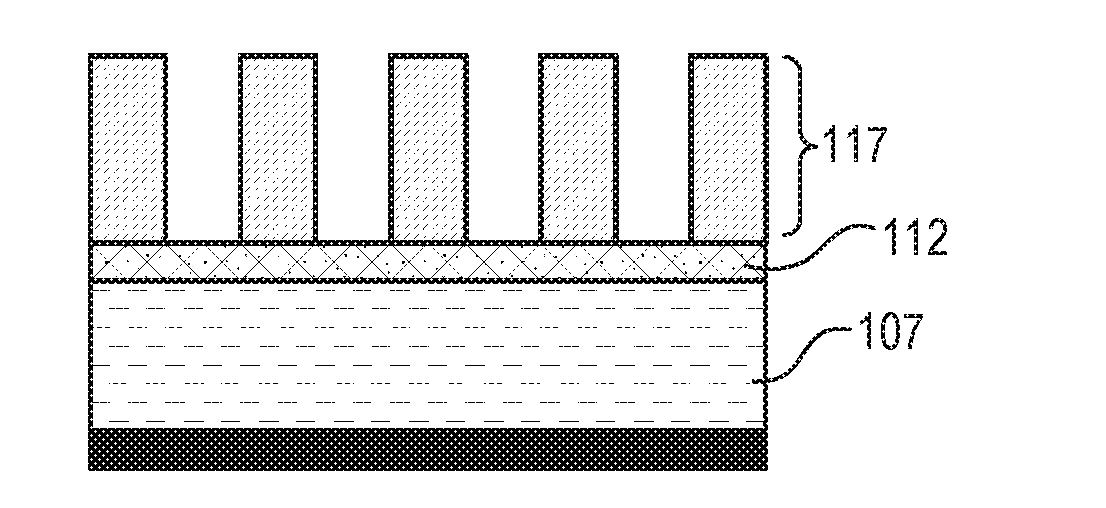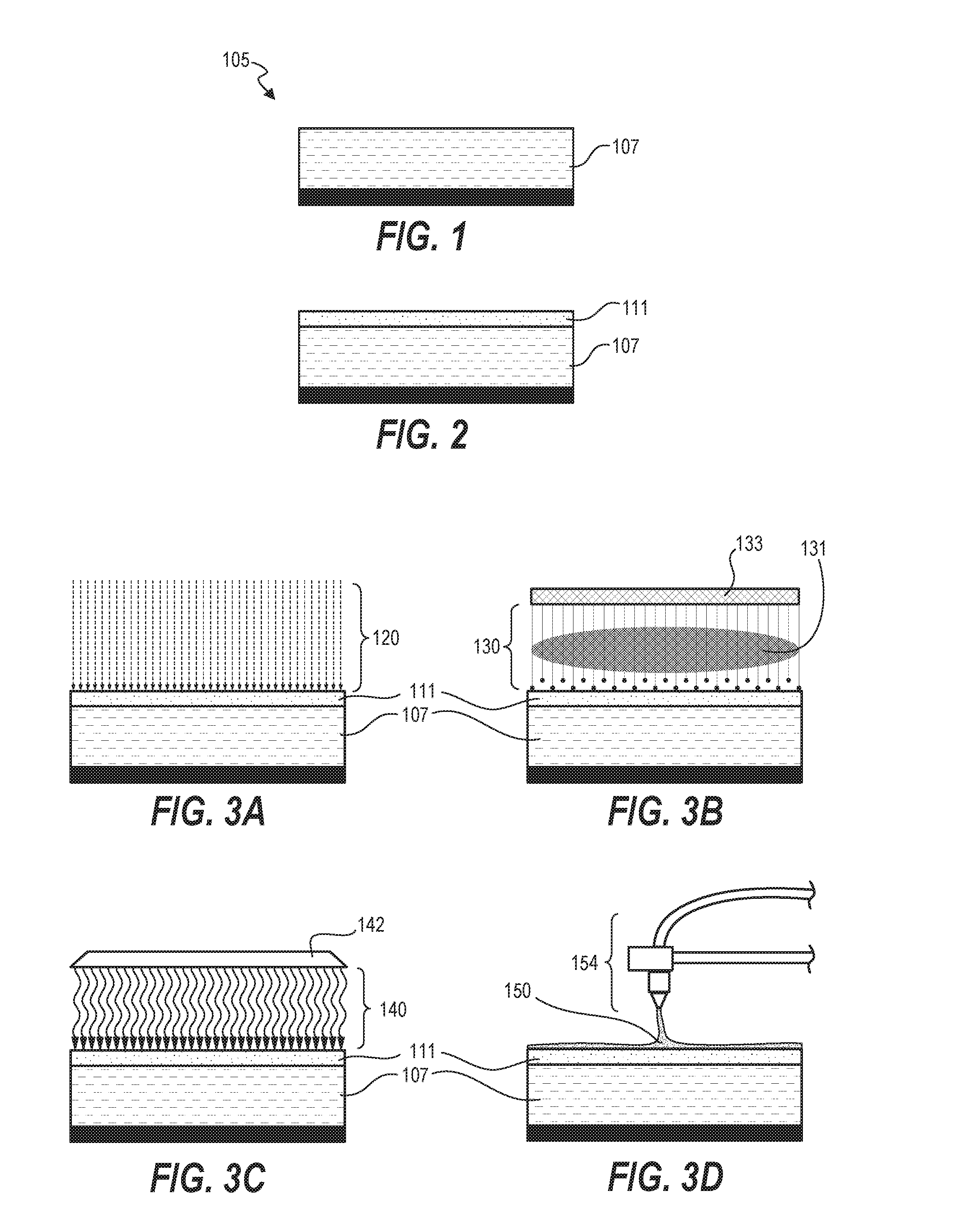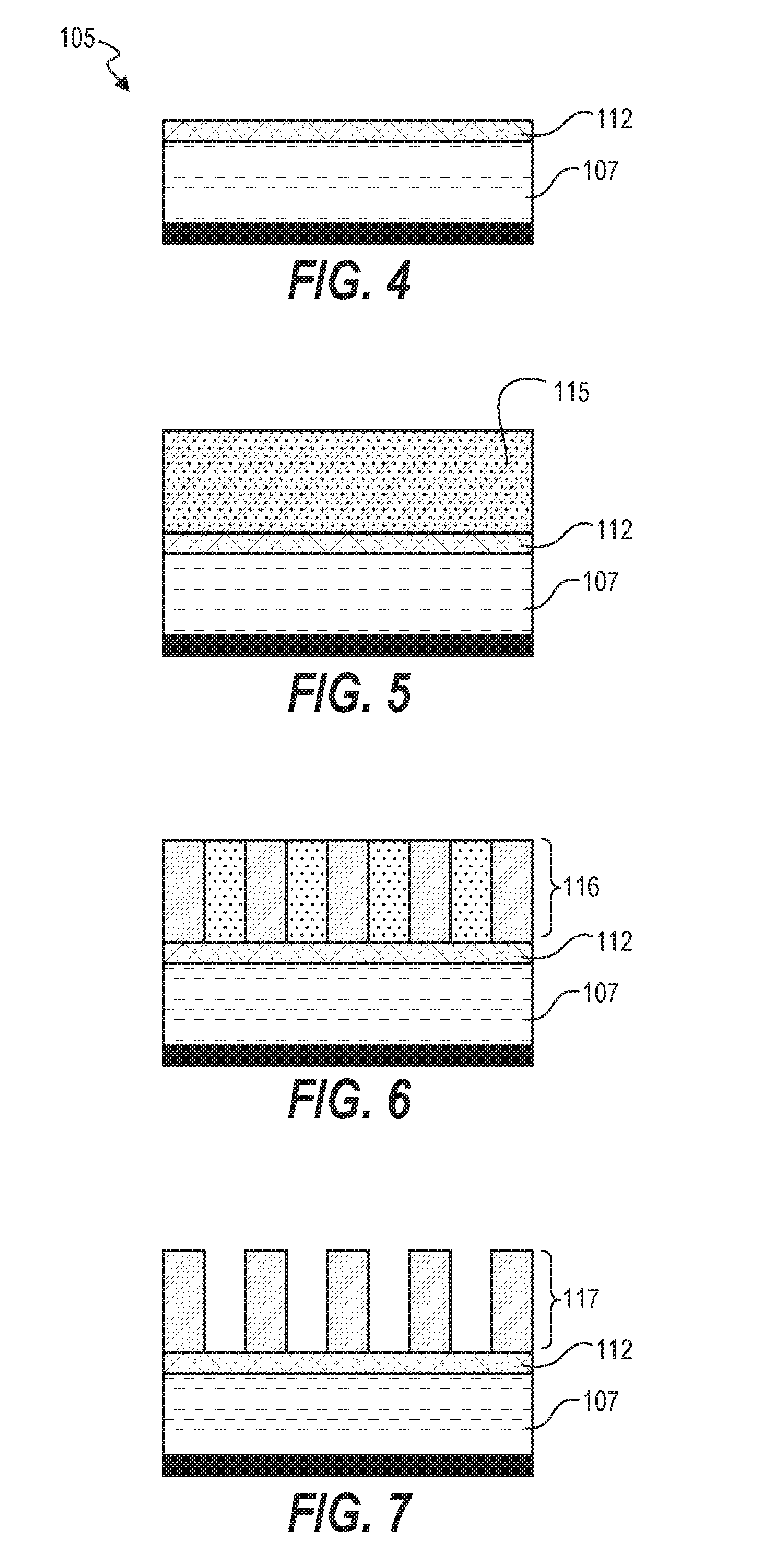Spin-On Layer for Directed Self Assembly with Tunable Neutrality
a technology of tunable neutrality and spin-on layer, which is applied in the direction of photomechanical equipment, instruments, and photosensitive material processing, etc., can solve the problems of insufficiently small holes, trenches, and lines in the pattern developed from photoresists, and achieve efficient, directed self-assembly
- Summary
- Abstract
- Description
- Claims
- Application Information
AI Technical Summary
Benefits of technology
Problems solved by technology
Method used
Image
Examples
Embodiment Construction
[0022]Successful directed self-assembly of block copolymers is realized when self-assembled on a neutral layer. This neutral layer matches (in characteristics) the directed self-assembly material to be applied on top of the neutral layer. Conventionally, there is no generic neutral layer that is compatible with multiple different block copolymer materials. Techniques disclosed herein include methods for creating a directed self-assembly tunable neutral layer that works with multiple different block copolymer materials. Techniques herein can include depositing a neutral layer and then post-processing this neutral layer to tune its characteristics so that the neutral layer is compatible with a particular block copolymer scheme or schemes. Post-processing herein of such a neutral layer can modify a ratio of pi and sigma bonds in a given carbon film or other film to approximate a given self-assembly film that will be deposited on this neutral layer.
[0023]Techniques herein include treati...
PUM
| Property | Measurement | Unit |
|---|---|---|
| wavelength | aaaaa | aaaaa |
| wavelength | aaaaa | aaaaa |
| wavelengths | aaaaa | aaaaa |
Abstract
Description
Claims
Application Information
 Login to View More
Login to View More - R&D
- Intellectual Property
- Life Sciences
- Materials
- Tech Scout
- Unparalleled Data Quality
- Higher Quality Content
- 60% Fewer Hallucinations
Browse by: Latest US Patents, China's latest patents, Technical Efficacy Thesaurus, Application Domain, Technology Topic, Popular Technical Reports.
© 2025 PatSnap. All rights reserved.Legal|Privacy policy|Modern Slavery Act Transparency Statement|Sitemap|About US| Contact US: help@patsnap.com



